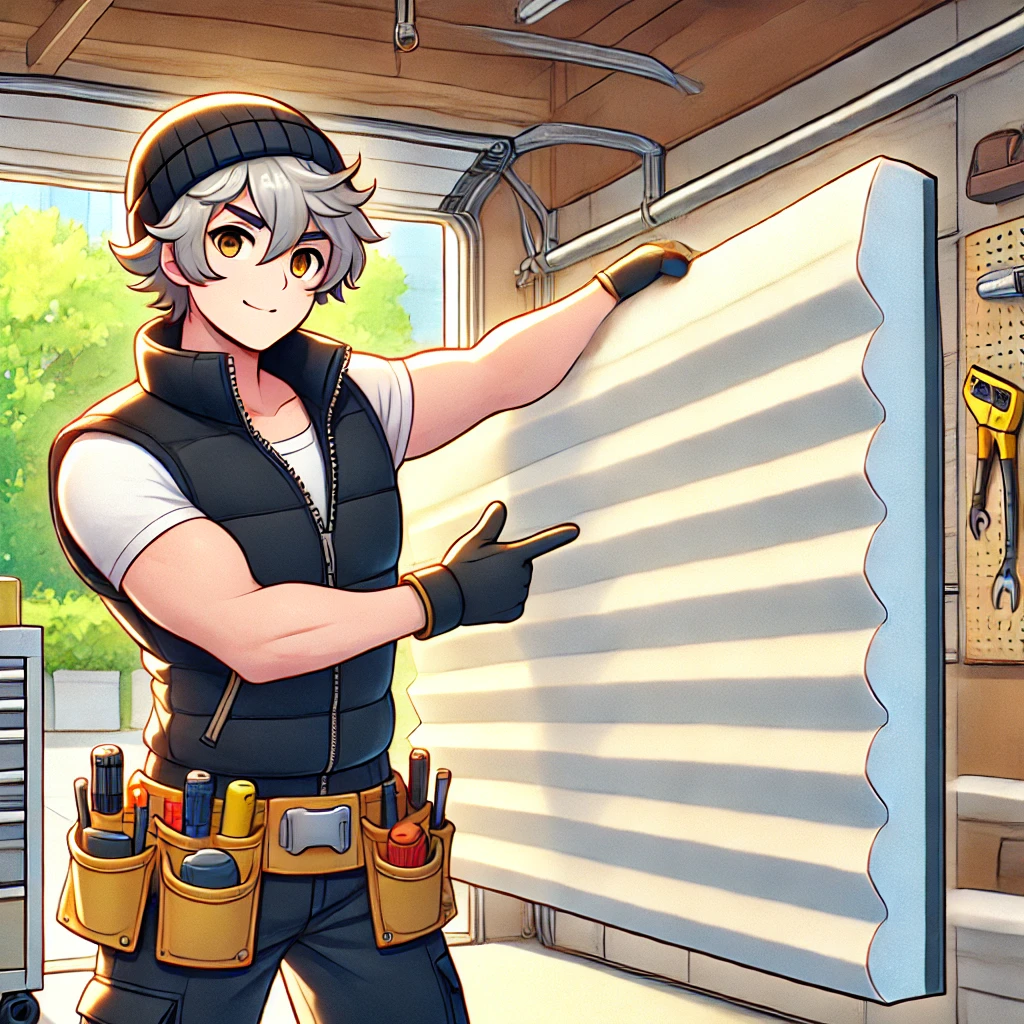A garage door without insulation is like wearing a winter coat with the zipper wide open—air flows freely, and you’re left wondering why it’s so chilly (or sweltering). The right insulation can make a huge difference, but with multiple options, which one stands out?
Best Insulation Options for a Garage Door
Different types of insulation offer various benefits, and the best choice depends on your priorities—temperature control, noise reduction, or budget. Here are the top contenders:
1. Rigid Foam Board Insulation
- Made from polystyrene or polyurethane.
- High R-value (thermal resistance), meaning better insulation.
- Lightweight and easy to cut to size.
- Durable and moisture-resistant.
2. Reflective Foil Insulation
- Composed of aluminum foil layers with polyethylene bubbles in between.
- Works well in hot climates, reflecting radiant heat away.
- Lightweight but doesn’t provide much soundproofing.
3. Fiberglass Batt Insulation
- The same fluffy material found in walls and attics.
- Decent R-value but requires a rigid backing to hold it in place.
- Absorbs moisture, so it’s not the best in humid areas.
4. Spray Foam Insulation
- Expands to fill gaps, offering excellent garage door sealing and insulation.
- Higher cost but maximizes efficiency.
- Great for irregularly shaped garage doors.
Each material has strengths, so consider your climate, garage usage, and budget before picking one.

How Much of a Difference Does Garage Door Insulation Make?
A garage door without insulation leaks air like a sieve. Adding insulation regulates temperature, reduces energy bills, and dampens noise.
- In winter, it keeps heat inside, preventing that bone-chilling cold from creeping in.
- In summer, it blocks external heat, stopping your garage from turning into a sauna.
- For attached garages, insulation helps maintain a steady temperature in connected rooms.
- If you use your garage as a workspace, insulation keeps it comfortable year-round.
Temperature fluctuations can also affect vehicles, tools, and stored items, making insulation a smart investment.
Do Garage Door Insulation Kits Really Work?
Short answer? Yes, but it depends on expectations.
Insulation kits are a budget-friendly, DIY solution. They typically include pre-cut foam boards, reflective panels, or fiberglass batts that attach to the inside of your garage door.
Pros:
✔️ Affordable and easy to install. ✔️ Improves temperature regulation. ✔️ Reduces noise.
Cons:
❌ May not provide maximum insulation compared to professionally installed options. ❌ Limited impact if the garage walls and ceiling are uninsulated.
If you need a quick upgrade without breaking the bank, a kit can be a solid choice. But for serious insulation, a full garage insulation project is better.
Is Foam or Fiberglass Insulation Better for a Garage Door?
The battle of foam vs. fiberglass comes down to performance, durability, and ease of installation for garage doors.
Foam Board Insulation:
- Higher R-value per inch, meaning better insulation in less space.
- Rigid and moisture-resistant.
- Doesn’t sag over time.
- Ideal for metal and wooden doors.
Fiberglass Batt Insulation:
- Good insulation but bulkier than foam.
- Absorbs moisture, which can lead to mold issues.
- Requires additional support to stay in place.
Verdict: Foam insulation wins for efficiency, durability, and ease of use. Fiberglass works, but it’s not as practical for garage doors.

How Do You Super Insulate a Garage Door?
Want to go all out? Here’s how to maximize insulation for your garage door:
- Choose high R-value insulation – Polyurethane foam boards are the best.
- Seal all gaps – Use weather stripping and caulk to stop air leaks.
- Insulate the rest of the garage – Walls, ceiling, and even the floor matter.
- Install a second layer – Adding another foam layer boosts insulation.
- Use insulated garage door panels – Some manufacturers sell pre-insulated doors.
Going this route turns your garage into a temperature-controlled zone, perfect if you spend time working in it.
Is It Worth the Extra Money for an Insulated Garage Door?
A standard garage door is just a sheet of metal. An insulated one adds layers of protection, making it a valuable upgrade. Ensure your garage door opener is installed well so it can handle the weight of the insulation.
Reasons to Invest in an Insulated Garage Door:
✔️ Better energy efficiency – Lower heating and cooling costs. ✔️ Quieter operation – Reduces vibrations and outside noise. ✔️ Increased durability – Insulated doors are stronger and last longer. ✔️ Higher home value – Adds appeal for potential buyers. ✔️ More comfortable garage space – Ideal if you use it as a gym, workshop, or storage area.
While the initial cost is higher, the long-term benefits make it a smart choice. If your garage is just for parking, a simple insulation kit may be enough. But if you use it regularly, an insulated garage door is worth every penny.
Insulating a garage door isn’t just about comfort—it’s about energy savings, noise reduction, and durability. The best option depends on your needs, but foam board insulation is the top choice for most people. Whether you DIY with an insulation kit or invest in a fully insulated garage door, your garage (and your energy bill) will thank you.
So, are you ready to kick that drafty garage door to the curb? It’s time to make your garage a space that works for you, not against you.
